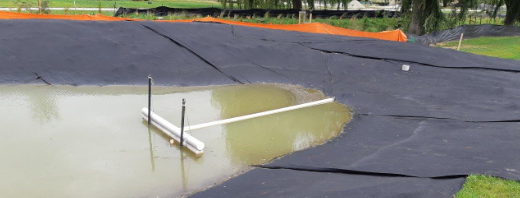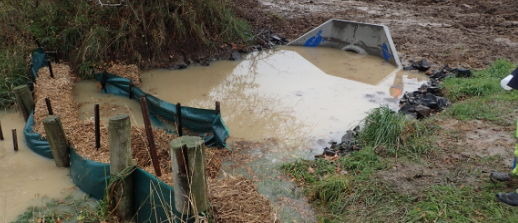There have been numerous instances around Otago of sediments being flushed off earthwork platforms into creeks, streams and lakes following heavy rainfall.
In September, new provisions in the Otago Regional Council’s Regional Plan became operative, which strengthens the management of discharges to water and means that in some situations consents are required.
This includes sediment from earthworks associated with urban residential developments, says ORC’s Team Leader Consents Coastal Otago, Jenny Ross.
While there are rules in place in some District Plans, these new rules provide an important opportunity to more actively manage any sediment discharges which could go to water.
“The message is to remind people there’s new requirements to meet and people may need consent from ORC for residential earthworks,” she says.

If rules covering “permitted activity” are followed, developers may not require a resource consent, Ms Ross notes.
“The [new] urban provisions enable ORC to have better oversight on the management of earthworks, and any sediment discharge that may impact water quality,” she says.

Main changes for property developers
The main changes for property developers are in Rule 14.5 of the ORC’s Regional Plan: Water for Otago.
Part G covers sediment from earthworks for residential development, which are permitted activities with no resource consent required.
For residential earthworks to be a permitted activity, developers must not expose more than 2,500 square meters of earthworks in any consecutive 12-month period per landholding and the earthworks must not be within 10 metres of a water body, drain, water race or the coastal marine area.
The exposed earth must be stabilised on completion of the earthworks, to minimise erosion and to avoid slope failure.
Soil or debris from earthworks must not be placed where it can enter a water body, drain, race or the coastal marine area and there must be no conspicuous change in colour, odour or significant effect on aquatic life.
The earthworks must not result in flooding, erosion, land instability, subsidence or property damage at or beyond the property’s boundary. Earthworks should not occur on contaminated or potentially contaminated land.
Ms Ross says if developers cannot meet these “permitted activity” requirements, they will then need to get a resource consent. Developers, or anyone undertaking this activity are encouraged to contact Council if they have any questions or think they may need consent.
National Environmental Standards – Freshwater; reminder about pipes and stream diversions
These standards were introduced in 2020 and regulate activities that pose risks to the health of freshwater and freshwater ecosystems.
A requirement of the NES-F is to get consent for culverts – which includes temporary culverts, Ms Ross says.
In a lot of cases, works in a stream; which often go hand in hand with residential earthworks, will involve a temporary diversion around the works area, often with a pipe. Such a pipe is classed as a culvert and would likely need resource consent, Ms Ross says.
Background to urban provisions
Plan Change 8 (PC8) within the Regional Plan comprised eight parts, each targeting a specific topic, covering both urban and rural practices, the latter announced in June covering rural discharges, and farming practices, including effluent storage and discharges.
PC8 is part of a transition toward a new freshwater management framework, being set into the ORC’s new Land and Water Regional Plan, the latter intended to be operative by December 2025.
It was the first step towards a policy framework which gives effect to the National Policy Statement on Freshwater Management 2020.
PC8 was part of a larger proposed Plan Change, called the Omnibus Plan Change, which was “called in’’ for fast-tracking by Minister for the Environment David Parker in April 2020.
For further assistance on assessing resource consent requirements or email public.enquiries@orc.govt.nz.
If anyone sees pollution around Otago, they can contact the 24/7 ORC Pollution Hotline on 0800 800 033, or email pollution@orc.govt.nz.
